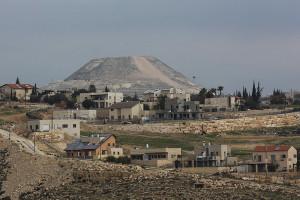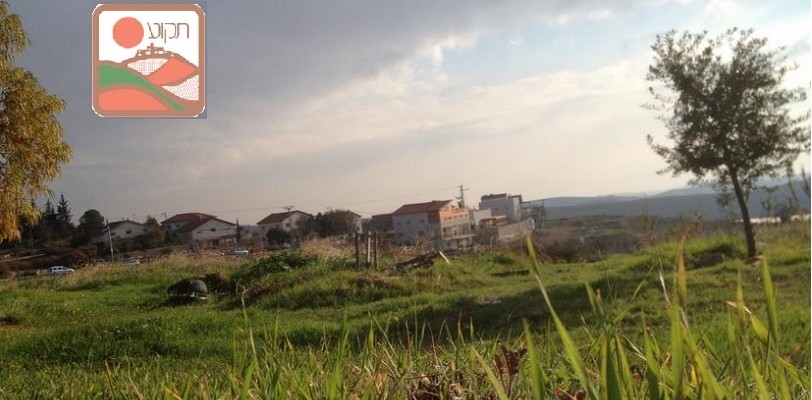
Ancient yet modern, Tekoa is a place where Jews of diverse backgrounds can live in harmony among the Judean Hills.
Famous as the birthplace of the biblical prophet Amos, modern Tekoa was re-established in the eastern part of the Etzion Bloc, first as a paramilitary town in 1975 and then for civilians in 1977. The origins are not incidental: throughout history, it has offered early warnings of attack from the East.
The growing yishuv (settlement) – population approximately 3,000 and increasing – overlooks the Judean desert and mountains and provides a clear view of Herodion, King Herod’s famous fortress. The town is located 2,177 feet (670 meters) above sea level, on a ridge surrounded on three sides by the canyon, Nahal Tekoa, which heads east to the Dead Sea. The climate belies its connection to the Dead Sea, despite its location on the outskirts of Jerusalem. When Jerusalem sees snow, Tekoa is wet from rain.

View of Herodion from Tekoa. (Photo: Nati Shohat/Flash 90)
The town was established on firm ideological principles of integration. The residents are a mixed population in terms of religious and secular, new immigrants and veteran Israelis, intellectual and vocational occupations, and a full range of ages. The yishuv places an emphasis on community and cooperation, combined with tolerance for diversity.
In fostering tolerance, locale maintains a variety of religious institutions. Various synagogues enrich the thoughtful flavor of the place, sustaining the practices of Ashkenazic Jews, Sephardic Jews, early risers, followers of the hasidic movement and those who relish in a service filled with joyful singing and dancing. Rabbi Adin Steinsaltz, a renowned scholar, heads a yeshiva where Talmudic texts are studied with gusto, and the community supports an elementary school that fosters respect among students of different religious backgrounds.
The region sustains the physical as well as the spiritual. It sports vineyards – with the accompanying winery – and olive groves and a mushroom farm. Visitors may enjoy the local chicken farm, horse stables, and the public pool that provides hot summer relief to swimmers from all over the Etzion Bloc.
Recent years have seen a population explosion. In part, people are moving there because of the flavor the community, but they are also choosing the location thanks to new proximity to Jerusalem: a relatively recently constructed road bypasses the surrounding villages, bringing drivers to the outskirts of the capitol in approximately 10 minutes.
The relationship between the residents and their Arab neighbors blows hot and cold. For many years, the then-Chief Rabbi of Tekoa, Rabbi Menachem Froman, maintained cordial relations with the Palestinian Arab leadership in the area. At the same time, Tekoans were not immune to Palestinian violence. Several families were the victims of shooting attacks on the road, and in May 2001, two pre-teen boys, Koby Mandell and Yosef Ishran, were murdered while hiking in the scenic area right outside the yishuv.
That said, many people gravitate to this beautiful community, loving the welcoming atmosphere and the glorious sunsets over the Judean Hills.
Author: Anne Gordon, United with Israel
